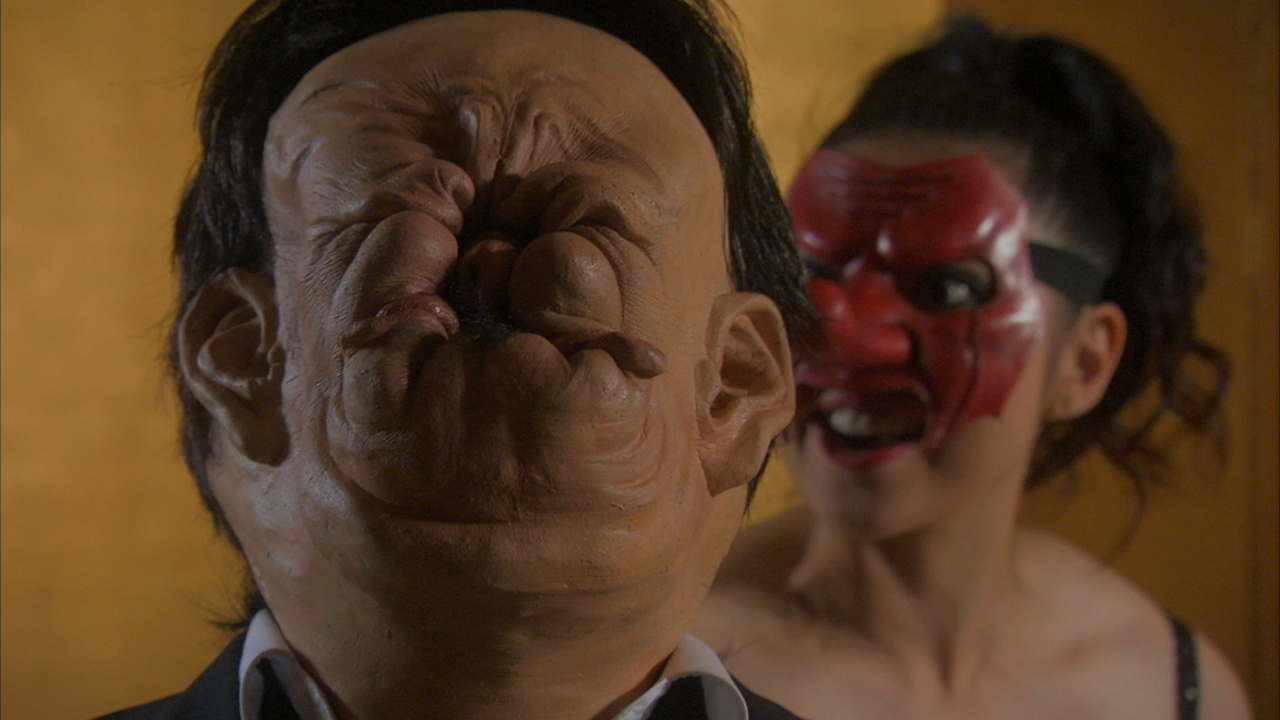
Japan is probably the country that has made the most cult films, a fact that could be attributed to the following reasons:
1.Artistic tradition, particularly the ero-guro movement.
2.History, with the violent transition from the samurai era to the contemporary one, and the nightmare caused by the aftermath of the atomic bomb.
3.The tolerance and even pleasure they draw from preposterous and onerous productions.
With cult films becoming more and more popular globally over the last few decades, a large number of previously unknown productions has become known through festivals and media releases. However, even in a category that is considered underground by nature, there are some titles that are even more underground.
Here is a list with 30 of them in random order.
1. LoveDeath (Ryuhei Kitamura, 2006)
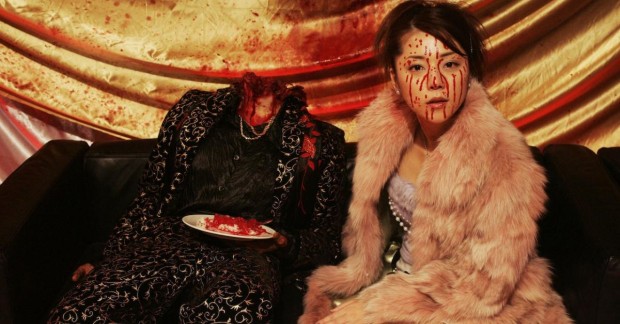
Ryuhei Kitamura (“Versus”, “Aragami”, “Azumi”) entailed in this film all of his perverse notions, including extremely graphic violence, hot girls, Yakuza, and anime/hentai aesthetics. He dipped them in the style of his Tarantino/Rodriguez influences and produced a 159 minute curio that borders on both parody and exploitation.
The main protagonists of the story are Sheela, the girlfriend of a Yakuza boss, and Shi, a naive hero willing to do anything for her. The two initially met a year prior, in a peculiar romance that ended with a number of people murdered and the girls simply leaving him.
Now she is back in his life, having stolen a ridiculously accurate amount from her boyfriend’s gang, along with a cop she has currently trapped in a closet because he tried to rape her. She asks from Sai to deal with the cop, in order for them to run together. Unfortunately for him, he agrees and gets into an altercation that initially results in him shooting the boss’s penis and a subsequent hunt that involves a plethora of preposterous characters.
Among them is the aforementioned cop who is roaming around with his skull open, the rest of the boss’s gang, another gang he has commissioned to hunt the couple, another two cops (one corrupt and one honest), a traffic cop on a bicycle, and many more. All of them, though, have a common characteristic: they are utter idiots. The only ones who seem to have any kind of common sense are the female characters, particularly Sheela, who manipulates them in any way she wants.
Kitamura directed a film that looks more like a collage of the various notions he had in his head than an actual film, a tactic though that results in a highly entertaining outcome, in the style of Katsuhito Ishii’s “Shark Skin Man and Peach Hip Girl”.
In that fashion, he included some BDSM elements, prolonged philosophical dialogues in Tarantino’s style, anime-like characters and even dildo-guns, in a film that looks like an insane odyssey as the couple is hunted through Japan.
2. Murder on D Street (Akio Jissoji, 1998)
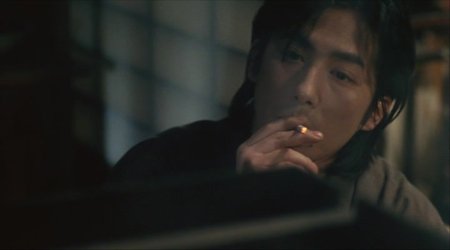
The script of the film is a combination of two short stories by Edogawa Rampo, “Case of the Murder on D – Slope” and” The Psychological Test.” The owner of Suiko-Do, a bookstore, asks from Fukiya, a legendary art forger to make copies of paintings by Shundei Oe, an artist who painted portraits of women being tortured, and whose lines were considered impossible to be copied.
Using a trick, Fukiya manages to deliver, but the owner asks for more, this time without providing originals, but rather assigning a girl to him in order to use her as a model.
A bit later, the owner is found dead and Saito, a clerk at the shop, is accused of her murder. After the police’s initial investigation, legendary detective Kogoro Akechi appears at the police station to solve the case.
Akio Jissoji masterfully directs a sadomasochistic thriller that eventually becomes a game of cat and mouse. His depiction of the various tortures, the sex scenes, and the aesthetics of the Tokyo of the era is magnificent as it is cult, despite the film being somewhat “polished”.
3. Mosquito on the Tenth Floor (Yoichi Sai, 1983)
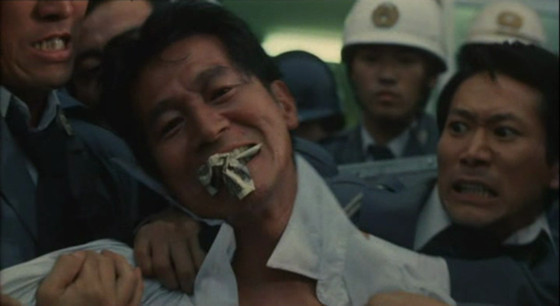
The script is based on an actual story, which made such an impression on Yuya Uchida that he decided to produce it, write the script along with the director, and star in it.
The central character (his name remains unknown through the duration of the film) is a low level police officer who lives in a small apartment on the tenth floor of a block of flats, and whose life is a total failure.
Professionally, despite being overdue age-wise, he has not succeeded in passing the promotion exams. This fact, along with his alcoholism, his addiction to gambling and the alimony he has to pay to his ex wife, has kept his finances in an awful state. Lastly, his sex life is also a mess and his daughter has become a delinquent.
Fed up with his life, he gets money loans from a number of companies, which he does not intend to ever return.
Yoichi Sai aesthetics are very similar to Takeshi Kitano’s, both in terms of characters and story, with the main character being an anti-hero cop who eventually explodes due to his life circumstances.
Yuya Uchida also acts the way Kitano does, being laconic and hypodermically ironic and humorous. Kitano’s films, that came up later drew heavily from this picture while he also holds a small part here.
4. Over Your Dead Body (Takashi Miike, 2014)
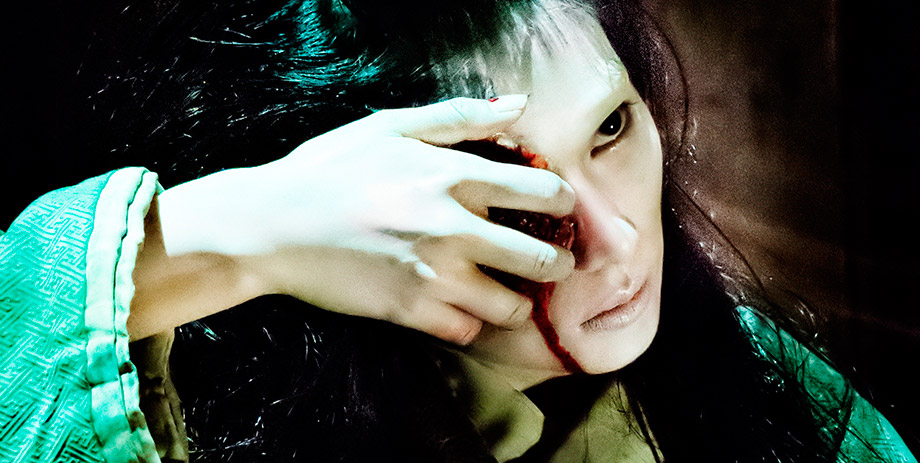
The film stands apart for two reasons. The protagonist is the famous Kabuki actor Ichikawa Ebizō XI, and the script is based on the quintessential Japanese horror tale “The Ghost Story of Yotsuya” (Yotsuya Kaidan), although Takashi Miike’s style had a definite say in the final outcome.
The script follows a theatre troupe as they rehearse a play, where a samurai seduces a woman and then murders her disapproving father in order to inherit his estate. However, when he is offered the granddaughter of another wealthy man, his true colors are disclosed to his wife, who eventually returns as a ghost to haunt him.
In real life within the movie, the female star of the film, Miyuki Goto, has pulled some strings to give the main protagonist role to her boyfriend, Kosuke Hasegawa. However, as other actresses Rio Asahina and Jun Suzuki lust after Kosuke, their lives begin to mirror those of the play, as the lines between fiction and reality gradually disappear.
Takashi Miike directs a horror film that moves on two axes. The first is the actual life of the actors, including the intrigues among them in rehearsals, and the second is the actual play, with the borders between the two growing blurry after awhile. The horror element is subtle in the beginning, but as the film progresses, it takes its usual place in Miike’s pictures, with a number of grotesque scenes (including one which is very difficult to watch, regarding a woman performing an abortion on her own) and bloodbaths.
Miike’s entertaining “eccentricity” is definitely not missing here, and is chiefly represented by a limp actress and the constant crying of a baby, both of which intensify the eerie atmosphere that permeates the film. Furthermore, the casting of a Kabuki actor in the role of a theatre actor is a notion that could only occur in Miike’s mind. Lastly, and in an unusual tactic for contemporary Japanese cinema, there are many sex scenes in the picture, with the first one even appearing at the very beginning.
5. Fish Story (Yoshihiro Nakamura, 2009)
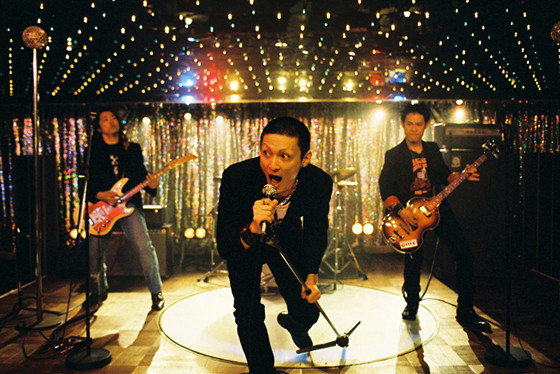
Yoshihiro Nakamura of “Dark Water” fame directed an utterly nonsensical film about a band that produced a punk record before the Sex Pistols, and the story of its members that may result in saving the planet from a giant meteorite.
The film concentrates on the effect the recording has on a number of initially seemingly unrelated scenarios, including a romance between a ferry employee and a pretty girl, elderly rockers in wheelchairs, and prophesying priests.
Nakamura’s biggest achievement in the film is that he manages to present an entertaining and easily understandable outcome, despite the preposterous script and the total lack of any attention to filmmaking rules.
6. Hazard (Sion Sono, 2005)
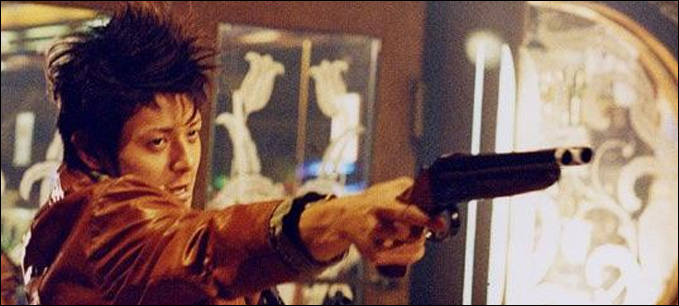
Shot in 2002 in true “guerilla” style, mostly with a handheld camera, “Hazard” was one of the hidden treasures in Sion Sono’s filmography until its release in Japan in 2006. It stars Joe Odagiri, who was still rising to stardom in Japan at the time.
Shin is a university student, frustrated and bored with his life in Japan. When he discovers a book detailing the trouble one could get into in New York, he instantly decides to travel there. However, upon his arrival in the city he is mugged, and left penniless and lost.
Sometime later, when he tries to steal something to eat from a liquor store, two Japanese persons confront him, eventually putting him under their protection.
Sono shoots a film about friendship, crime, violence, and literature, while providing a clear message about the disillusion between what is boring and what is exciting. Although purely fictional, the use of the handheld camera gives “Hazard” a documentary-like feel, while presenting a foreigner’s view of life in the streets of New York.
Probably one of the most restrained Sono films, “Hazard” was widely unknown in Japan until its release in 2006.
7. Death Tube (Yohei Fukuda, 2010)
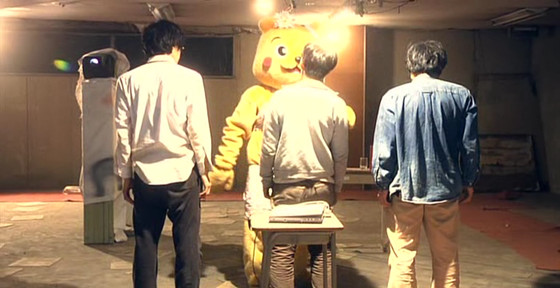
A parody of “Saw” by the director of “Grotesque” could not be possibly left off of this list, despite the fact (or because of it) that the parody element may not have been included intentionally.
Inoue, after being prompted by a friend, checks a site where various individuals are locked in different rooms and forced to face unusual trials. What leaves him shocked, though, is the fact that whoever fails is immediately killed in grotesque fashion. When he finally manages to take his eyes off the screen, he disdains the images as farcical.
However, the next time he wakes up, he finds himself in one of those rooms, where a man dressed as a yellow bear is giving guidelines for the trial he will have to face in order to avoid execution.
Yohei Fukuda directs a violent and claustrophobic thriller that borders on splatter, with the sense of grotesqueness heightened by the extensive use of digital camera.
The script’s naivety, the obvious mistakes (for example, a scene when a man is screaming while his neck is cut) and the distorted sense of humor seem to have been included intentionally, in a picture that is preposterous as much as it is violent.
8. Oppai Volleyball (Eiichiro Hasumi, 2009)
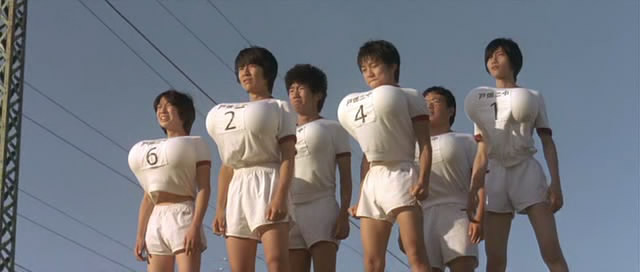
Although “Oppai Volleyball” was created in the usual fashion of the Japanese indie film, its central concept nevertheless makes for a movie that stands apart from the many other films just like it.
Mikako is a newly transferred teacher at a junior high school. Excited for her new job, she volunteers to coach the boys’ volleyball club. However, she soon realizes that she has been assigned a bunch of lazy teenagers whose main concern is to peek at girls.
In her anxious effort to motivate them to start training, she asks them what it would take to make them put some effort into volleyball. Being the perverts they are, they propose that if they win a game, they will get a chance to see her breasts (oppai). Overjoyed with their idea, they take her shock as an affirmative answer and they start training with all their might.
Eiichiro Hasumi directs a genuinely Japanese concept, with Japan being the only country in the world where a coming-of-age film based on the perverted ways of students could be shot.
In that fashion, the film entails a number of hilarious scenes, with the boys exhibiting their perversion to the whole world, as with the scene where they are running in the street constantly shouting “Oppai”.
9. Wild Zero (Tetsuro Takeuchi, 1999)
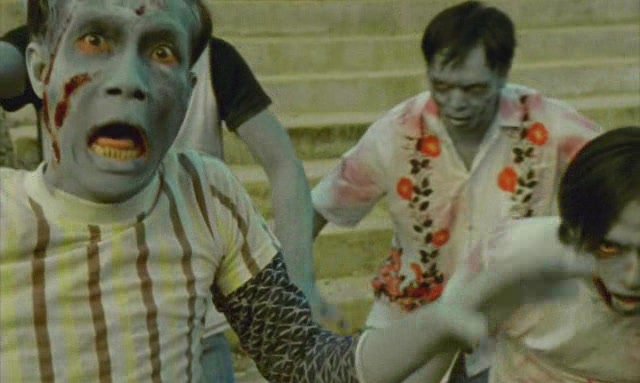
Japan’s take on zombies could not be similar to that of other countries, with “Wild Zero” being distinct proof of the fact.
Ace is a youngster who idolizes the noise-garage band Guitar Wolf, constantly following them through their live shows. During an incident involving a skirmish between the band and a club owner, the leader of the band (aptly named Guitar Wolf) recognizes the rock potential of Ace, thus making him a blood brother.
Almost at the same time, aliens invade the planet and people start turning into zombies.
If the presence of the actual members of Guitar Wolf was not enough to make this a cult film, Tetsuro Takeuchi also included zombies, crazy managers in very tight shorts, nude women, transgender love, laser guitar picks, beer, drugs and muscle cars.
All of the above, along with the noise-punk sound of the band makes for a movie that looks like an extreme video clip, all covered in blood.
10. Postman Blues (Sabu, 1997)
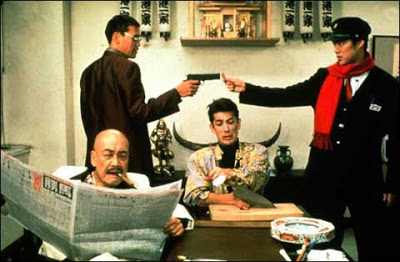
Sawaki is a postman. One day he visits an old friend of his named Noguchi, who has joined the Yakuza. The visit brings along a series of paranoid events that lead Sawaki to meet a cancer patient he eventually falls in love with, a hit man named Joe, and for the police, which were monitoring Noguchi, to presume him as a criminal.
Sabu penned and directed a parody of both Yakuza and crime-solving films, including a number of themes and characters that lie somewhere between the hilarious and the preposterous. The National Hitman Qualification Tournament is a clear example of this, with all the participants looking like Chow Yun Fat in “A Better Tomorrow”, except one who is the spitting image of Leon, from the homonymous French film.
Another example is the dialogue Sawaki has with Joe, regarding the profession of the contract killer and its difficulties.
Shinichi Tsutsumi as Sawaki and Ren Osugi as Joe are great in their parts, with their biggest achievement being that they appear utterly serious among all the nonsensical incidents and dialogues that occur. Lastly, it is extremely funny to watch Susumu Terajima, who has made a career by portraying Yakuza, to act as a police officer.